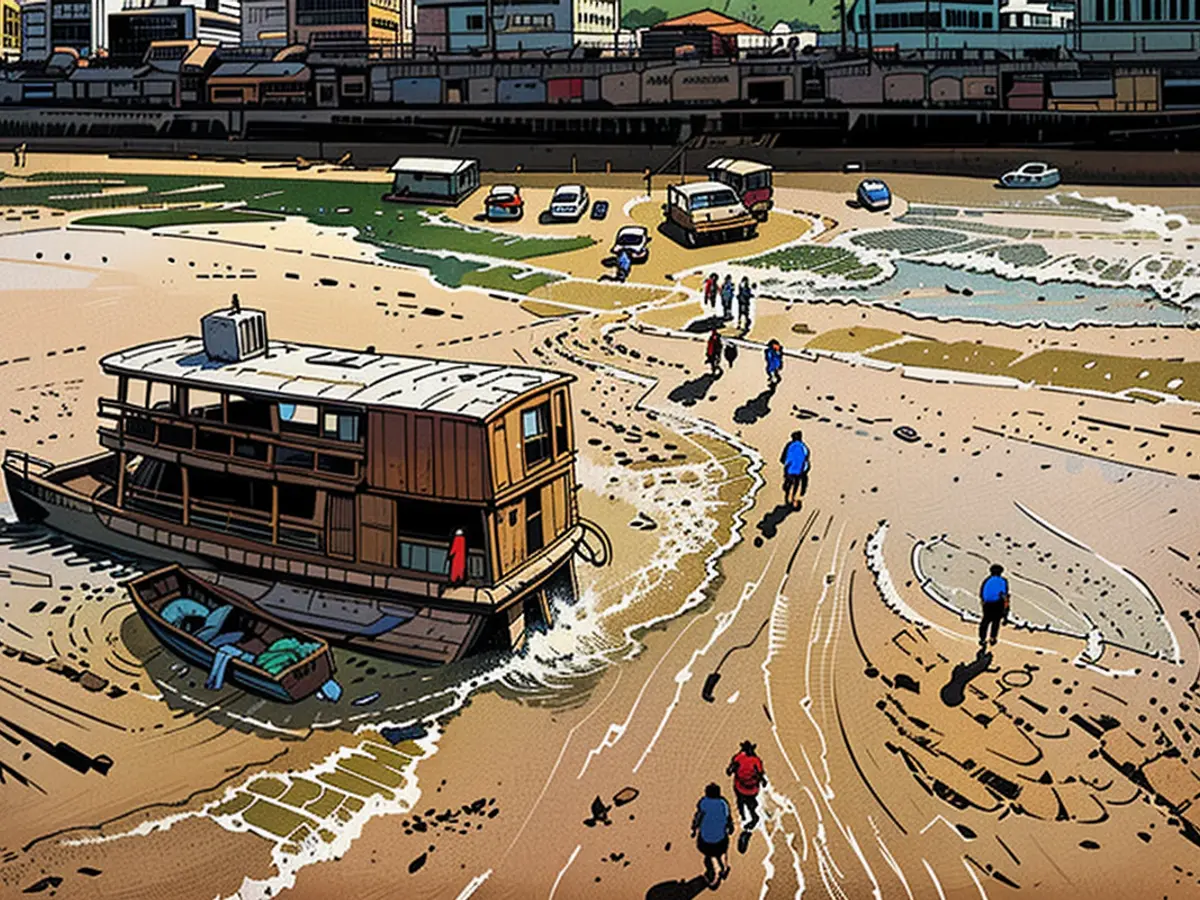Amazon waterway attains minimal depth since 1902's record.
The Rio Negro, being a major tributary of the Amazon in Brazil, is currently at its lowest water level on record. This drastic drop is due to severe drought that has been persisting in the region. The water level in Manaus, the state capital, has dropped to 12.66 meters as per the data from Brazil's Geological Survey (SGB). This is the lowest level recorded since 1902.
Photographs show parts of the river being completely dry at the Manaus port due to the intense drought. Further decrease in water level is predicted by SGB's forecasts.
Struggle for Town's Survival
People living along the riverbanks are particularly impacted. Many depend on boats for their daily commuting, trade, and transportation of essentials like water, food, and medicine. However, low water levels have made it difficult to navigate and have left several boats stranded, causing a struggle for survival. A boatman named Raimundo Filho shared, "If my boat is stuck here, I don't make any money."
More than a third of Brazil's territory, where most of the Amazon region is situated, is currently grappling with extreme drought, as per the National Center for Natural Disaster Monitoring (Cemaden). This is the most severe drought recorded since accurate measurements began in 1950, and it's linked to the weather phenomenon El Niño and climate change.
The recent years in the Amazon region have seen a series of extreme events due to climate change, as noted by the national coordinator of the hydrological warning system of the SGB, Artur Matos. He emphasized, "The years 2021 and 2022 were marked by great floods, while the years 2023 and 2024 have been characterized by severe droughts. This points to a trend of increasing extremes."
The European Union, expressing concern over the environmental crisis, has called for immediate international action to combat climate change and prevent further damage to the Amazon rainforest. The severe drought affecting the Amazon region, including the European Union's concern, has been identified as one of the most severe droughts recorded since accurate measurements began in 1950.






